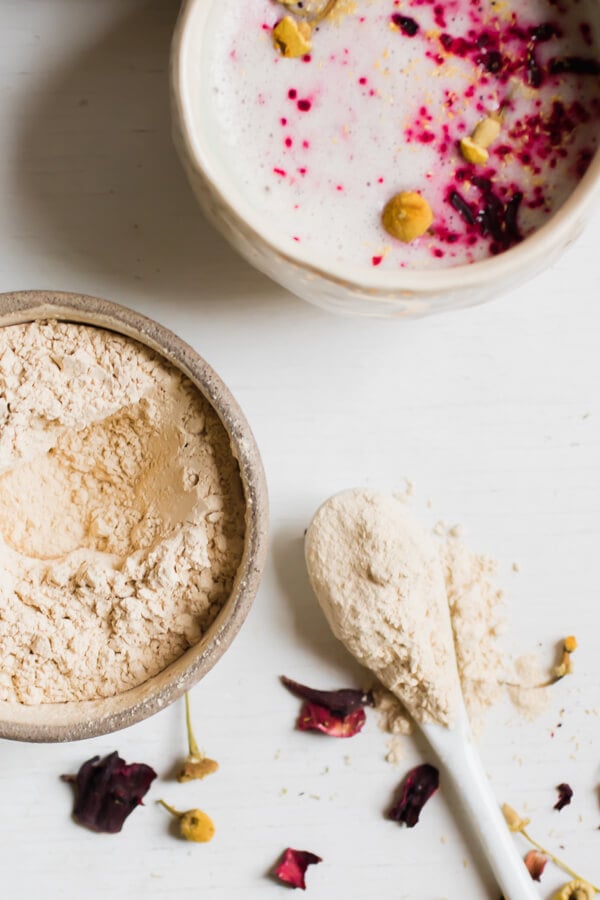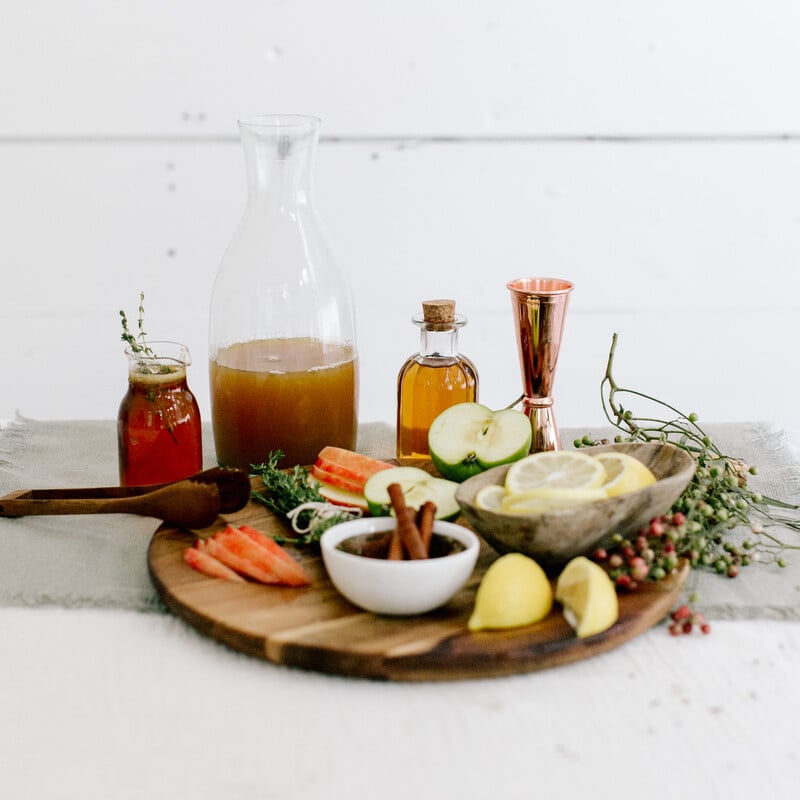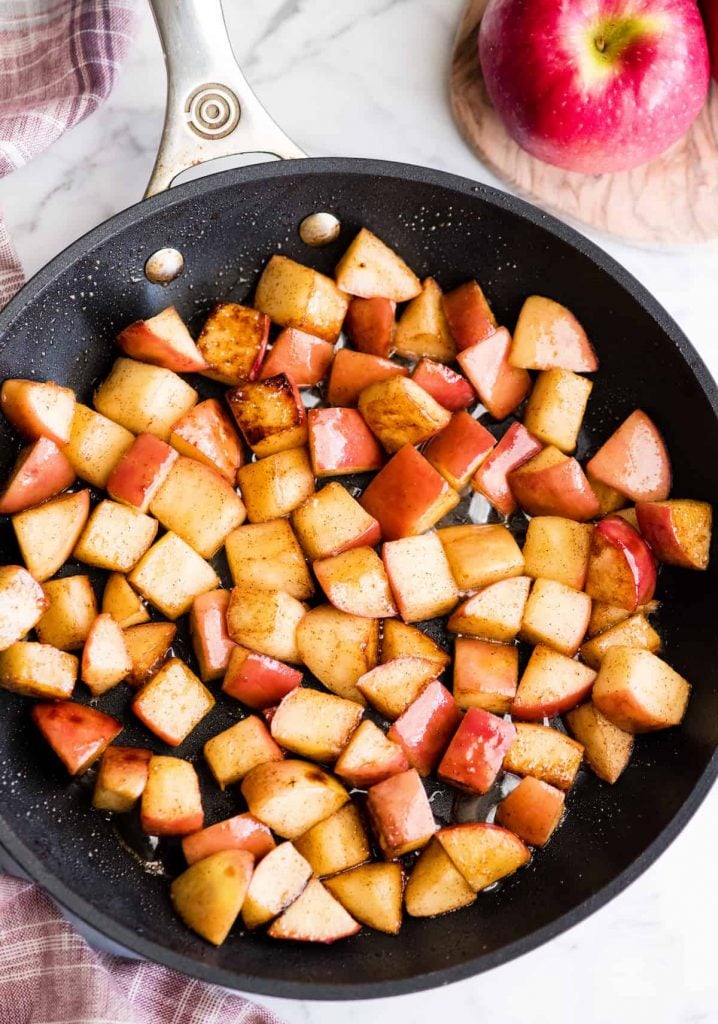Hacks to boost your metabolism—myth or fact? We’ve all heard the claims. And in many cases, we’ve fallen victim. Rest assured, we’ve done our research. To help you distinguish between ally and enemy, we’ve got you covered. In essence, there’s no quick fix. Boosting your metabolism is a combination of daily habits, commitment, and a source of accountability. All of these make a difference: sipping on an energizing tea, eating these fruits and vegetables, and incorporating a metabolism-boosting powder. But what if you could take it one step further? Today, we’re diving into an undervalued way to rev your metabolism. Enter: metabolism-boosting spices and herbs. That’s right. This isn’t about fad diets or crazy ingredients, it’s simply about up-leveling your favorite meals—for function and flavor. Sayonara, bland brown rice and greens.

What Are Spices and Herbs?
Spices come from the bark, root, or other parts of tropical plants and trees. They’re typically consumed dried or ground. Herbs, on the other hand, are leaves. While most come from plants without woody stems, there are a few exceptions. Like, bay leaves. Interestingly, basil, rosemary, and parsley are called spices, but they actually qualify as herbs. After all, they’re aromatic leaves. The more you know. In general, herbs and spices are widely distributed. You’ll find them grown all over the world. They can be grown in your backyard, too! With savory or aromatic properties, herbs and spices flavor and garnish food, are used for medicinal purposes and provide fragrance. They’re in everything from skincare and beauty, to household and cleaning products.
6 Health Benefits of Herbs and Spices
Tiny but mighty, their benefits stretch a mile long. Herbs and spices are an easy and convenient way to add flavor, color, and nourishment to dishes (without adding extra fat, sugar, or salt). Many herbs and spices are loaded with a range of health benefits, including powerful antioxidants. Below are six reasons to add metabolism-boosting herbs and spices to your repertoire.
Boost Metabolism Many herbs and spices have been shown to fight cravings while supporting fat burn. In essence, simply diversifying your spice cabinet can potentially help with weight loss. The reason being certain spices and herbs provide a thermogenic effect. This increases your metabolism. Furthermore, other herbs can reduce hunger, helping you feel fuller, longer. When these herbs are used in conjunction with diet and exercise, weight management is possible.
Studies Show They Can Balance Blood Sugar
As mentioned, cooking with herbs and spices is a delicious (and functional) way to make foods more flavorful and satisfying. Speaking of satisfaction, one of the ways to keep your blood sugar balanced is by eating satiating foods. Think avocados, eggs, and complex carbs. But to get more bang for your buck, consider adding spices and herbs like cinnamon and turmeric. Studies show these aid in blood sugar balance.
The Right Spices Can Curb a Sweet Tooth
You may find that you need less sugar in some of your favorite dishes if you add sweet spices like cinnamon, cardamom, or nutmeg.
Spices are Good for your Heart
In lieu of table salt, reach for a variety of herbs and spices. They can help mitigate the risk of heart disease. In fact, two new studies indicate that herbs and spices can help promote better cardiovascular health. Furthermore, one study found that adding herbs and spices may help reduce blood pressure. Spices like black pepper, garlic powder, curry powder, cumin, dill, basil, ginger, coriander, and onion are potent and effective.
They Can Reduce Inflammation
Many herbs and spices are being studied for their ability to reduce harmful inflammation in the body. Inflammation is found to be the precursor of many chronic diseases, including heart disease and Alzheimer’s. Rather than consume pro-inflammatory foods, like vegetable oils, opt for anti-inflammatory spices and herbs. Turmeric is a particularly potent anti-inflammatory spice, along with ground ginger.
Spice and Herbs Are Rich in Antioxidants
When it comes to increasing your consumption of antioxidants, look no further than your pantry. Spices and herbs are rich in antioxidants. Antioxidants are key for overall health, including supporting your metabolism. Colorful substances found in plant foods, antioxidants help protect your cells against aging, the environment, and other stressors. Did you know, for example, that half a teaspoon of cloves has more antioxidants than 1/2 cup of blueberries? Herbs and spices with the most antioxidants include oregano, sage, peppermint, lemon balm, clove, and cinnamon.

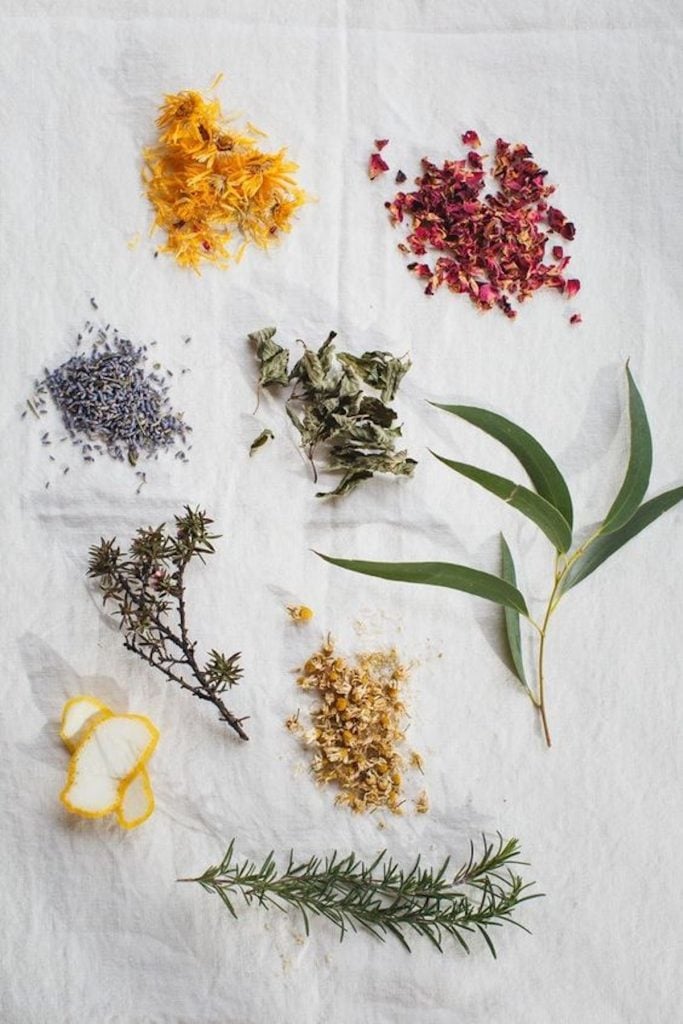
How to Add Flavor Without More Salt
If your idea of the perfect metabolism-boosting meal is plain fish with a salad and brown rice, you’re missing out on both nutrients and flavors. Herbs and spices are the best way to add flavor to food for no extra junk—which is critical when you’re trying to boost your metabolism. They’re a safe and effective way to add more variety to your diet, too. If you’re new to adding herbs and spices, consider these combinations:
Asian fusion: Ginger + Garlic + Red Pepper Flakes
When making a stir-fry, fried rice, etc., skip the high-sodium soy sauce and opt for equal parts ginger, garlic, and red pepper flakes. A dash of coconut aminos also goes a long way!
Indian spice: Curry + Cumin
Making a curry? Give your dish an Indian flair with these warming spices. Add red pepper flakes for more heat or garlic powder for more savory.
Italian-inspired combo: Basil + Oregano
To create a classic Italian flavor, opt for ground basil and oregano. Use equal parts for a marinara sauce.
Roasting blend: Rosemary + Sage
When roasting poultry, pork, or beef, try equal parts rosemary and sage. You can also use this blend on vegetables, like fingerling potatoes and eggplant.
Sweetness: Cinnamon + Nutmeg
Swap sugar in your oatmeal for this blend. Start with equal parts cinnamon and nutmeg, and adjust to your liking. I love roasting sweet potatoes with cinnamon as well.
Tex-Mex flavor: Chili Powder + Cumin + Paprika + Oregano
Most packaged taco seasonings are high in salt. Opt for homemade Tex-Mex flavor with chili powder, cumin, paprika, and oregano.
10 Metabolism-Boosting Herbs and Spices
Give your meals—and taste buds—a whirl. These metabolism-boosting herbs and spices will quickly become pantry staples!
Cayenne Pepper
Cayenne pepper (Capsicum annuum) is a popular spice in Mexican, Cajun, Creole, and Asian cuisines. It’s most often used in the form of dried powder or flakes. On the heat scale, cayenne is considered to be a medium-hot pepper (hotter than a jalapeño but cooler than a habanero). Cayenne pepper contains metabolism-boosting nutrients, like vitamin C, potassium, and capsaicin. Capsaicin, in particular, is responsible for its heat and many of its health benefits. Some research suggests that capsaicin acts as a thermogenic chemical. Meaning, it can produce heat to stimulate your metabolism and help you burn fat.
Cinnamon
Cinnamon acts in multiple ways to boost metabolism. First and foremost, the body uses more energy to process cinnamon than other foods. More on that, here. Research shows cinnamon has an insulin-like action in the body, improving body metabolism. Given that it’s high in fiber, cinnamon can help reduce food cravings by promoting a feeling of satiety and fullness.
Recipe: Stovetop Cinnamon Apples by Joy Food Sunshine
Fenugreek
Possibly not the most common household spice, let me introduce you to fenugreek. First and foremost, it has impressive health benefits. A plant belonging to the legume family, fenugreek has long been used in alternative medicine. It’s a common ingredient in Indian dishes and is often taken as a supplement (particularly for breastfeeding moms). Several studies have found that fenugreek may help control appetite and reduce food intake to support weight loss. Furthermore, it supports metabolism. Research shows that fenugreek seeds improve glucose metabolism, and may be useful in the control of diabetes risk factors.
Ginger
Ginger, like cayenne pepper, enhances the thermic effect of food. Meaning, it can be used as an agent for weight management and metabolic health. The medical literature indicates that ginger can work along with a healthy diet and exercise to help you reach a healthy weight. Keep in mind that ginger is typically used with other ingredients when weight loss is the goal.
Recipe: Tropical Pineapple Ginger Smoothie


Turmeric
The data is in: a review of 21 studies, within over 1,600 people, linked curcumin (a substance in turmeric) intake to reduced weight, BMI, and waist circumference. Most of turmeric’s health properties can be attributed to curcumin, which has strong antioxidant and anti-inflammatory properties. Ultimately, turmeric is a must-have when it comes to boosting your metabolism. Not sure how to increase your turmeric consumption? Look no further. Keep in mind that a little bit of turmeric goes a long way—it has a distinctly earthy flavor. Also, it’s best to pair turmeric with black pepper, as the compounds in pepper help your body absorb curcumin.
Black Pepper
Speaking of black pepper, this is another spice to keep in your pantry (although you likely already have it!). Black pepper has a magical ingredient called piperine, which is known to boost metabolism. In essence, a preliminary study suggests that piperine fights fat by blocking the formation of new fat cells. In this study, researchers looked at the effects of piperine on gene expression in fat tissue. The results showed that piperine interfered with the activity of genes responsible for forming new fat cells.
Recipe: Mushroom, Spinach, and Goat Cheese Frittata
Oregano
If you needed an excuse to add more oregano to your favorite pasta dish, this is it. Oregano is an herb that contains carvacrol. One animal study showed that carvacrol may help decrease weight and fat gain by altering fat synthesis in the body. Although more human-based research on oregano and weight loss is needed, this animal study is promising. Oil of oregano is also purported to help with digestive health and increase metabolic rate (which helps lead to weight loss).
Ginseng
Studies indicate that ginseng, which is often used in traditional Chinese medicine, may stimulate weight loss, delay fat absorption, and modify fat formation. Furthermore, additional data shows that the therapeutic effects of ginseng may improve metabolic syndrome.
Cumin
Native to Asia, Africa, and Europe, cumin is a popular global spice. It’s essential for Indian curries and chutneys, rice dishes, stews, soups, barbecue sauces, and chili recipes. And great news: cumin may boost your metabolism, lower cholesterol levels, and help decrease your blood sugar. Studies confirm that consuming ground cumin can support weight loss goals.
Recipe: Healthy Turkey Chili by Ambitious Kitchen

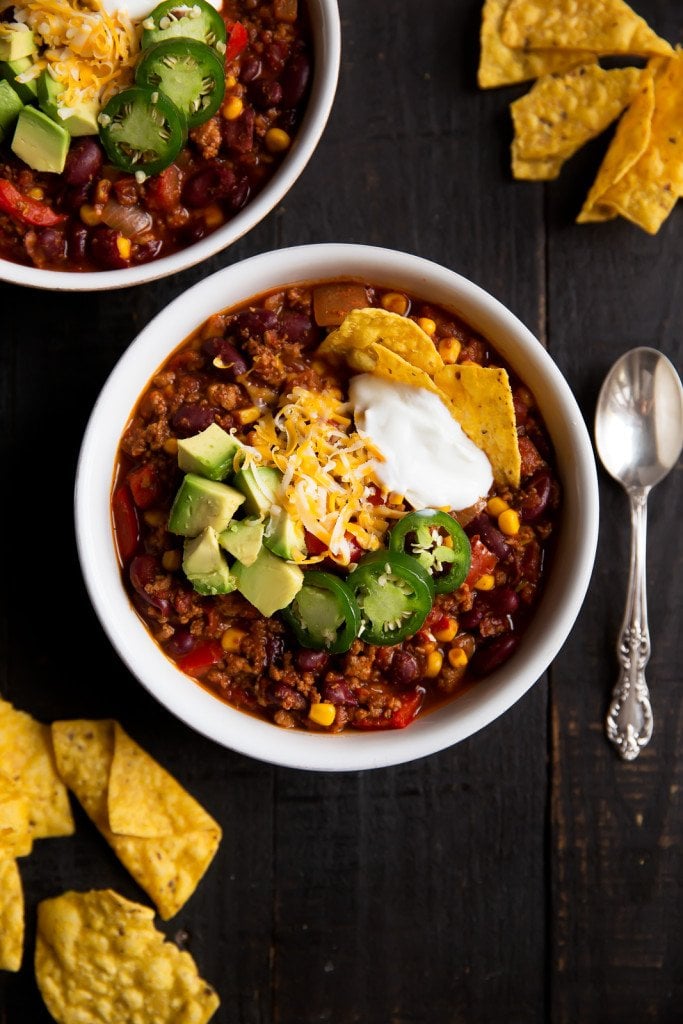
Ashwagandha
An outlier in the world of traditional spices and herbs, don’t forget about ashwagandha. A powerful adaptogen, consider adding it to your wellness routine. Ashwagandha is full of antioxidants that are essential for weight loss and overall well-being. These antioxidants can speed up metabolism, decrease inflammation. and thus help in burning the stored fat.
Recipe: Hibiscus Adaptogen Latte by Abra’s Kitchen

